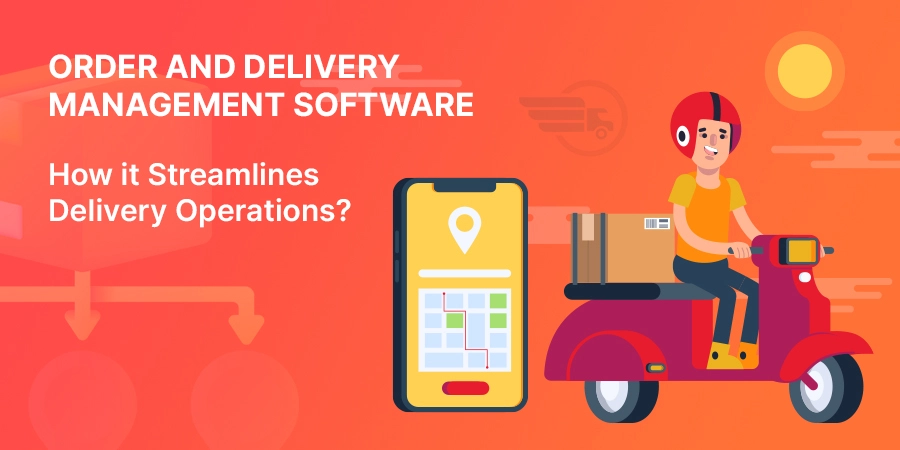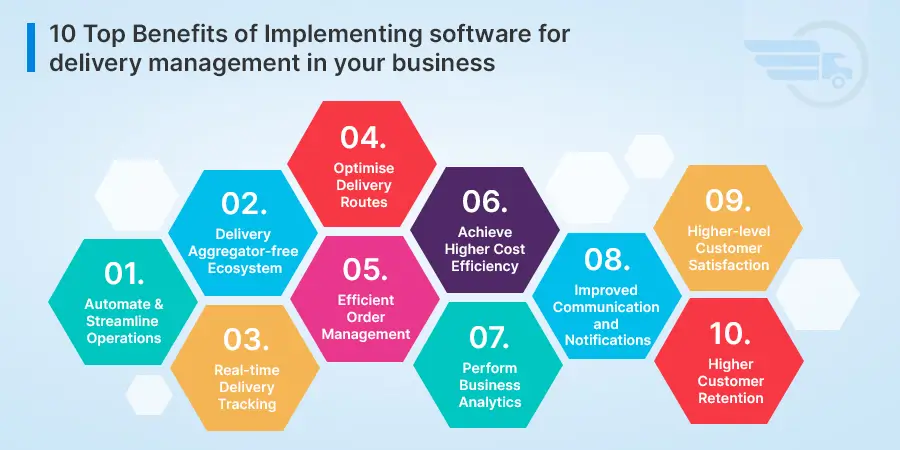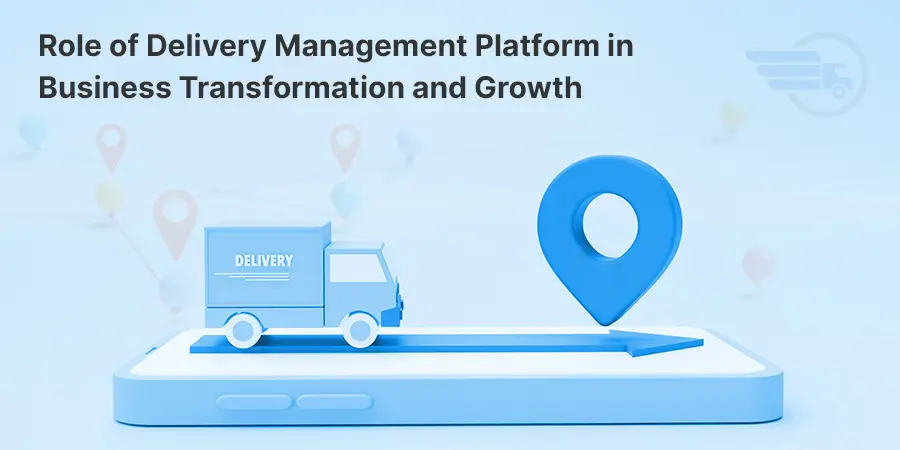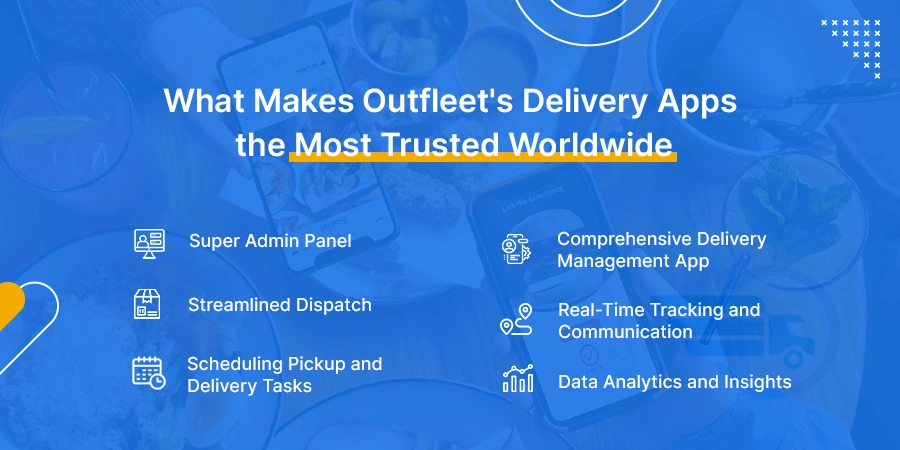Reengineering Urban Mobility: Unveiling the Power of Dispatch Delivery Management System
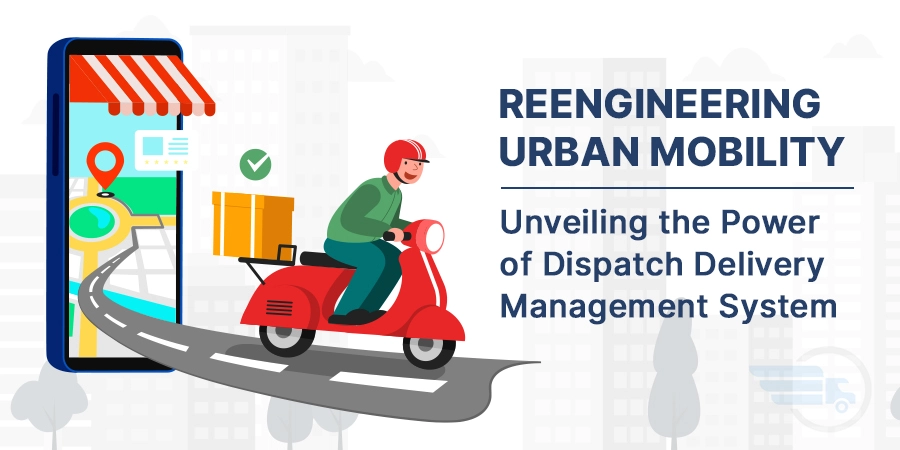
In the realm of modern urban living, where efficiency and speed intertwine, the role of a dispatch delivery management system stands out as a pivotal force in reshaping the landscape of urban mobility. As cities expand and e-commerce continues its upward surge, the need for a sophisticated system to orchestrate deliveries has never been more critical. The system serves as the linchpin, revolutionising how goods navigate the intricate web of city streets.
From the prompt delivery of online orders to ensuring the availability of goods across multiple locations, this technology introduces a new echelon of optimization to the process.
Dispatch Delivery management system, Indispensable for Modern Businesses
With rapid urbanisation and the incessant surge of online commerce, the intricate orchestration of timely and efficient deliveries has become a fundamental challenge for businesses and cities alike. This is where the paramount role of a Dispatch Delivery Management System (DMS) comes into play. At its core, it is a sophisticated digital solution that empowers businesses to streamline, optimise, and enhance their delivery processes from end to end.
Delivery Management Software encompasses a constellation of technologies, including real-time tracking, route optimization algorithms, data analytics, and intuitive user interfaces. These components collaboratively ensure that every aspect of the delivery journey is meticulously orchestrated, minimising delays, optimising routes, and enhancing overall operational efficiency.
The reach of a DMS extends far beyond the realms of traditional delivery services. E-commerce platforms rely on these systems to seamlessly bridge the gap between virtual shopping carts and real-world doorsteps. Retailers, restaurants, and service providers of all scales leverage DMS to conquer the challenge of last-mile delivery, bringing products and services to customers precisely when and where they're needed.
In the context of urban mobility, a DMS contributes to alleviating traffic congestion and reducing carbon footprints by optimising delivery routes, thus contributing to sustainable urban development. Throughout this exploration of the role of Dispatch Delivery Management Systems, we will delve into the multifaceted dimensions of their impact. Join us as we navigate through the intricate pathways of this technological marvel, uncovering its capabilities, benefits, and the promising future it shapes for businesses and cities seeking to master the art of delivery in our dynamic world.
Advantages of Dispatch Delivery Management System
In modern logistics and transportation, Delivery Management Software has emerged as a game-changer for businesses seeking to optimise their delivery processes and elevate customer satisfaction. By leveraging advanced technologies and intelligent algorithms, DMS offers a plethora of advantages that not only streamline operations but also enhance overall efficiency and customer experience.
One of the primary advantages of a DMS is its ability to optimise delivery routes. Through sophisticated algorithms, it considers factors like traffic patterns, delivery windows, and optimal sequencing of stops. This results in reduced travel time, minimised fuel consumption and improved on-time delivery rates. The system's capability to adapt to real-time changes ensures that routes remain efficient even in the face of unexpected disruptions.
Automation lies at the heart of a DMS, allowing for swift and accurate dispatching of delivery orders. Instead of manually assigning tasks to drivers, the system automates the process based on predefined rules and parameters. This not only saves time but also reduces the risk of human errors, ensuring that orders are assigned and dispatched in an optimised manner.
Optimised routes directly contribute to significant fuel savings. By selecting the most efficient paths, DMS minimises unnecessary mileage and idle time. This reduction in fuel consumption not only translates to cost savings but also has a positive environmental impact by reducing carbon emissions.
Real-time tracking is a cornerstone of modern DMS. Businesses and customers alike benefit from accurate, up-to-the-minute information on the status and location of their deliveries. This transparency enhances trust and enables customers to plan their activities accordingly. For businesses, real-time tracking facilitates better operational decisions and the ability to address potential delays proactively.
DMS contributes to enhanced driver safety by providing navigation assistance, optimising routes to avoid high-risk areas, and promoting adherence to speed limits. The system's real-time tracking also allows for monitoring driver behaviours, enabling businesses to identify and address unsafe driving practices promptly.
Modern businesses depend on digital data for taking critical decisions. DMS offers custom reporting options that provide insights into various aspects of the delivery process. Businesses can analyse metrics like delivery times, driver performance, and route efficiency. These reports empower companies to make informed choices for process improvement.
Electronic proof of delivery (ePOD) is a significant advantage offered by DMS. Instead of relying on physical paperwork, drivers can capture digital signatures, photos, and notes upon successful delivery. This ensures accurate record-keeping, reduces administrative burden, and expedites the invoicing process.
Real-time tracking, accurate delivery estimates, and efficient routes contribute to a positive delivery experience. Businesses that consistently deliver on time with transparency build trust and loyalty among their customers.
Differences Between DMS and Transport management systems (TMS)
Both Dispatch Delivery Management Systems and Transport Management Systems play important roles in ensuring the seamless movement of goods and services. While these terms might sound interchangeable, they actually refer to distinct yet interconnected aspects of the supply chain process, each catering to specific needs and challenges. Here are some major differences between them.
DMS primarily focuses on the optimization of the final leg of the supply chain—the delivery process itself. This encompasses aspects like real-time tracking, route optimization, delivery scheduling, and customer notifications. The core objective is to ensure that products reach their intended recipients in a timely and efficient manner, enhancing customer satisfaction.
Transport Management Systems, on the other hand, have a broader scope. They encompass the entire transportation process, from planning and procurement to execution and performance analysis. TMS involves managing various modes of transportation, freight consolidation, carrier selection, and freight cost management. The goal is to optimise transportation operations, reduce costs, and improve overall supply chain efficiency.
DMS excels in providing features tailored to the intricacies of last-mile delivery. These include real-time tracking that allows customers to monitor their deliveries, optimised route planning for drivers, electronic proof of delivery, and customer communication tools. It empowers businesses to address the challenges of unpredictable traffic, specific delivery time windows, and customer expectations for transparency.
Transport Management Systems offer a more holistic suite of functionalities. These encompass load planning, carrier selection, freight rate negotiation, freight audit and payment, transportation analytics, and overall supply chain visibility. TMS optimises the entire transportation network, ensuring that shipments move efficiently across various modes and geographies.
Dispatch Delivery Management Systems are often integrated into broader logistics and e-commerce platforms. They cater to businesses that require efficient last-mile delivery for their products and services. DMS integration enhances the customer experience by providing real-time tracking and delivery updates.
Transport Management Systems are typically employed by larger enterprises with complex supply chain networks. TMS solutions integrate with various enterprise resource planning (ERP) systems, warehouse management systems (WMS), and other logistics tools. This enables comprehensive management of transportation processes across multiple locations, suppliers, and carriers.
Conclusion
To sum up, a well-implemented Dispatch Delivery Management System offers a multitude of advantages that transform the way businesses handle their delivery operations. From optimising routes and reducing fuel costs to providing real-time tracking and enhancing driver safety, the system streamlines every facet of the process. Custom reporting options and electronic proof of delivery not only increase operational efficiency but also contribute to overall customer satisfaction.
As the logistics landscape continues to evolve, embracing the power of DMS becomes a strategic imperative for businesses aiming to stay competitive, efficient, and customer-focused.
Latest Posts
- Transforming E-commerce: How Seamless Order Management Enhances Customer Experience
- Fast Track Optimization: The Art and Science of the Most Efficient Route Planner
- Mastering Efficiency: The Role of Real-time Tracking Solutions in Restaurant Business
- The Future of Delivery: How Streamlined Logistics Can Transform Your Operations
- Real-time Handling: Key to Solving Dispatch Delivery Problems
- The Powerful Impact of Grocery Delivery Management System on Retail Business
- Benefits of an Automated Dispatch Software for your Business
- Six Essential Task-handling Features in Delivery Tracking System Software
- 8 Reasons to Implement Software-based Dispatch Management in this Era
- Order and Delivery Management Software: How it Streamlines Delivery Operations
